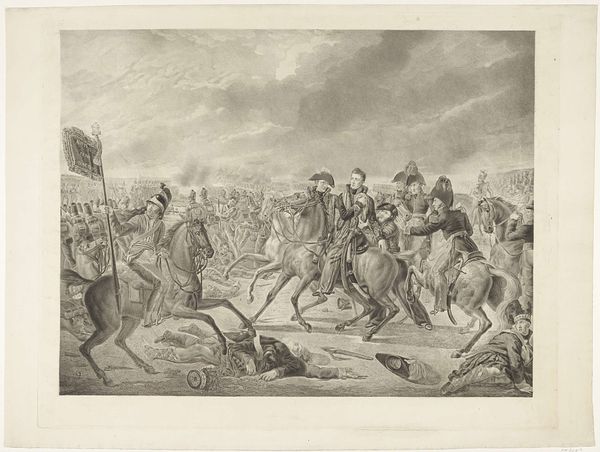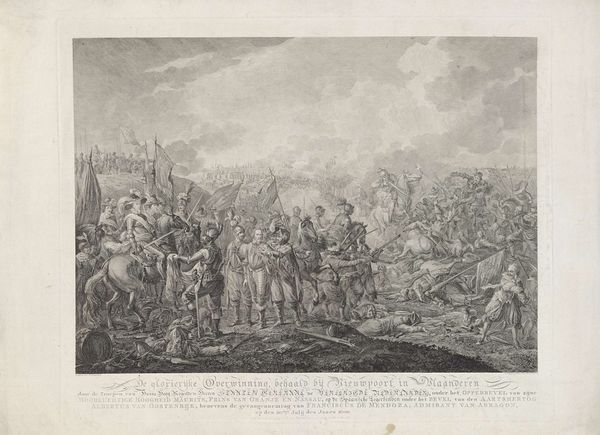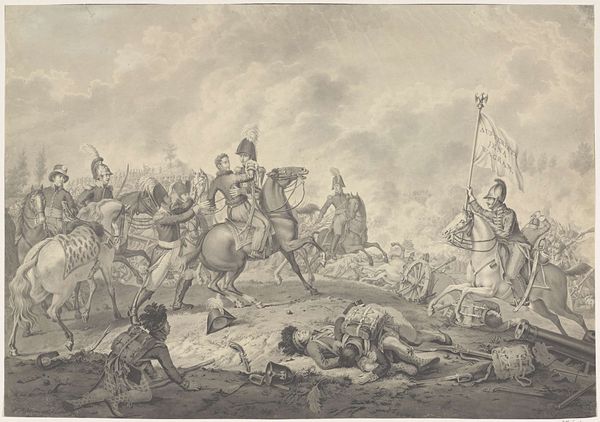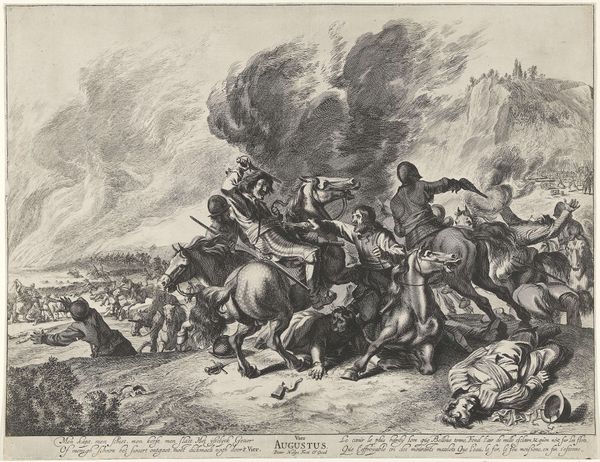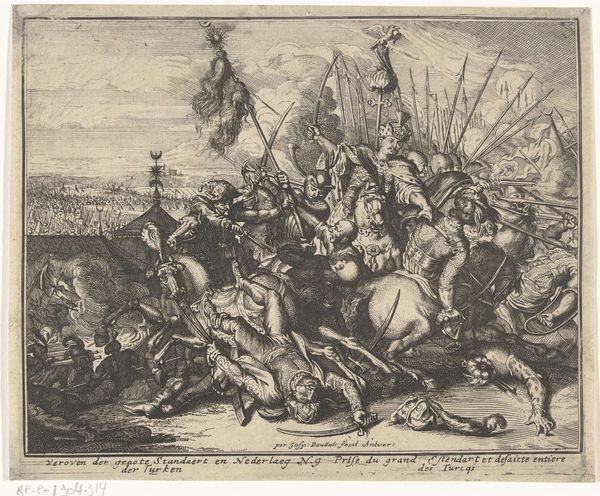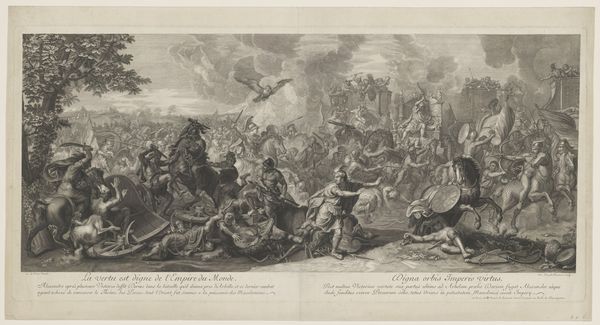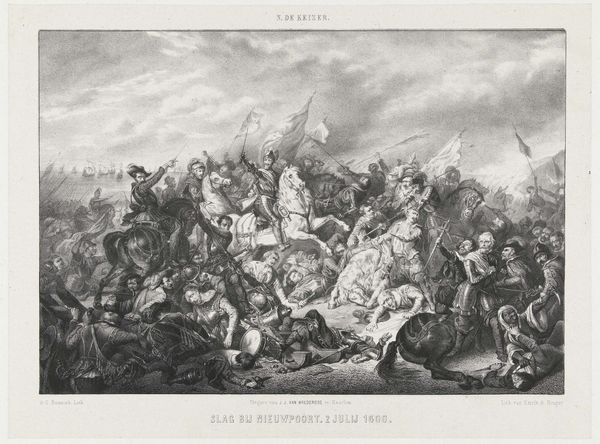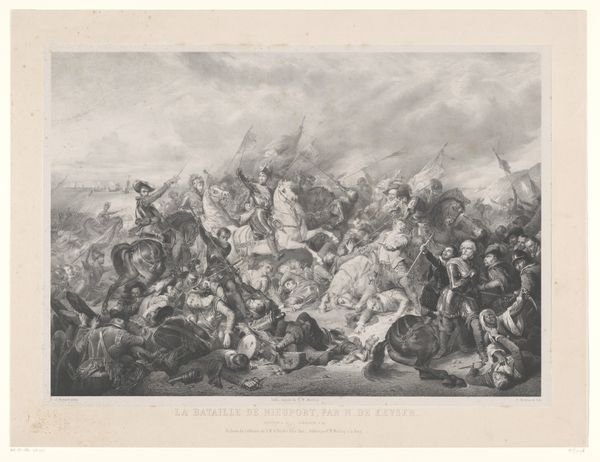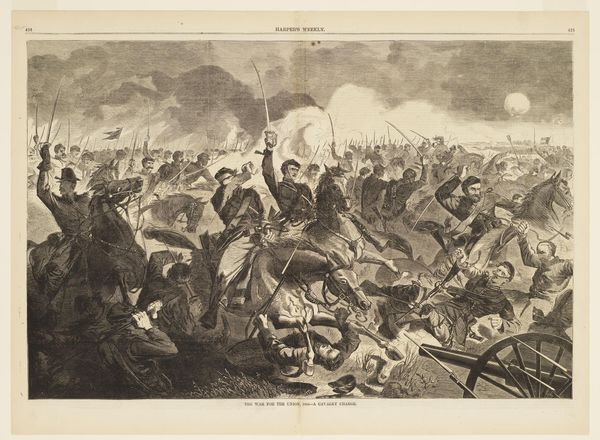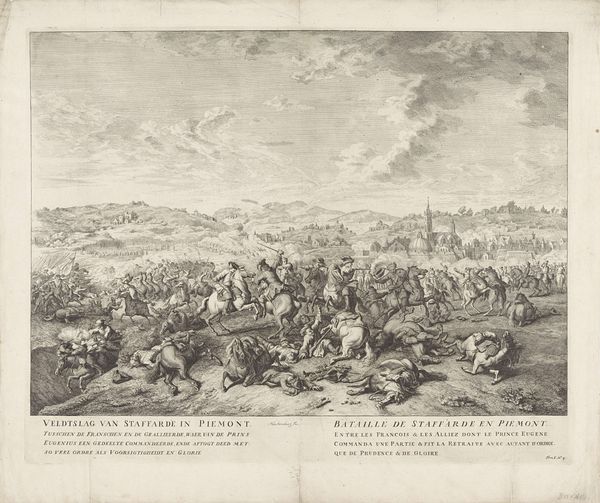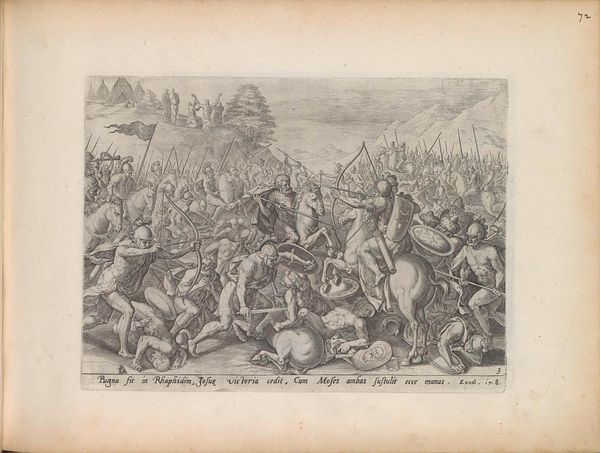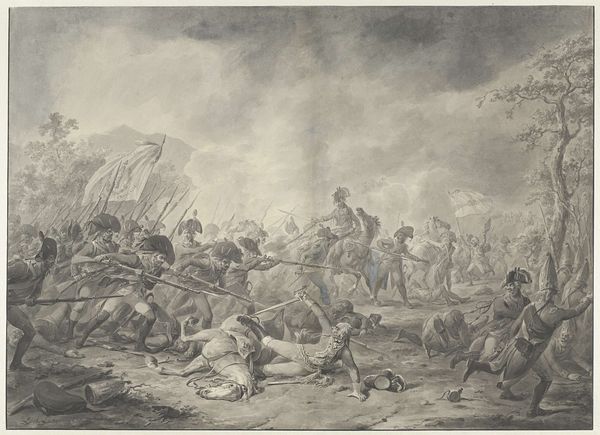
Zyne Koninklyke Hoogheid Willem Prins van Oranje in den roemrijken veldslag van Waterloo, op den 18den Junij 1815, gewond op het oogenblik der overwinning / Son Altesse Royale Guillaume Prince d'Orange (...) 1817
0:00
0:00
willemvansenus
Rijksmuseum
engraving
#
portrait
#
neoclacissism
#
old engraving style
#
romanticism
#
history-painting
#
engraving
Dimensions: height 625 mm, width 785 mm
Copyright: Rijks Museum: Open Domain
Willem van Senus created this print of the Prince of Orange at the Battle of Waterloo, sometime after the event in 1815. It depicts the Prince at the very moment of victory, but also when he was wounded, and this ambivalence speaks volumes about the politics of imagery in the Netherlands at this time. The Netherlands had only recently been freed from Napoleonic rule, and the House of Orange was restored to power. Images like this one were crucial in building up the legitimacy and popularity of the new regime. We see the Prince as a heroic figure, leading his troops to victory. However, the image also acknowledges the cost of war, with fallen soldiers in the foreground. To fully understand this print, historians pore over military records, political pamphlets, and even popular songs. This helps reveal the complex social and institutional forces that shaped its production and reception. What we see in the Rijksmuseum is not just a depiction of a historical event, but a carefully constructed piece of political messaging.
Comments
No comments
Be the first to comment and join the conversation on the ultimate creative platform.
